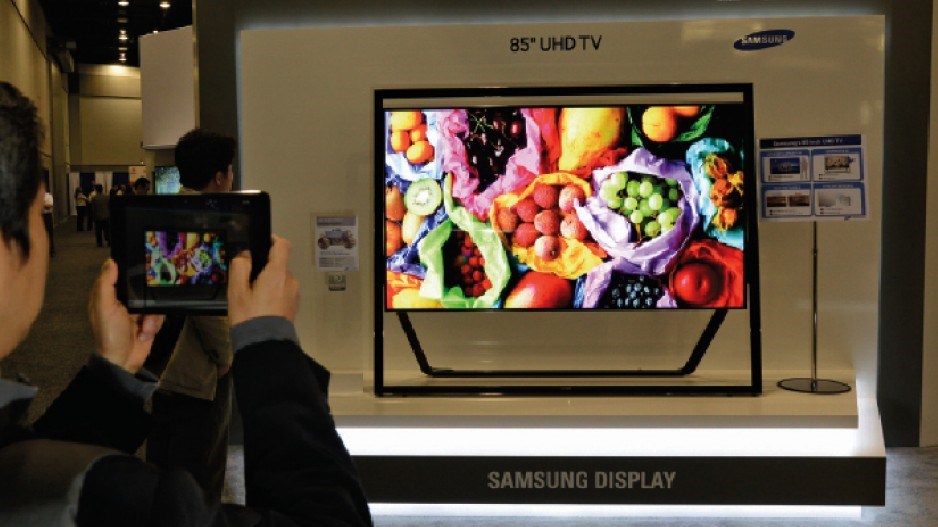Revenue from out-of-home digital advertising is projected to double to $5.2 billion over the next five years.
The prediction for income generated by billboards, transit posters and other advertising not delivered or consumed at home came courtesy of Magnaglobal, an arm of global advertising giant Interpublic Group (NYSE:IPG), at the May 19 to 24 Society for Information Display's (SID) 2013 Display Week. The event, which took place at the Vancouver Convention Centre, featured a wide range of researchers, developers and manufacturers, who showed off the next generation in digital displays, offering a glimpse into a future that could include foldable, bendable and rollable e-paper.
The opening session of the Society for Information Display's 2013 Display Week heard that such products could spell further trouble for ink and paper.
"Every place you see paper, every place you see an image, every place you see a sign, every place, you need to start asking who put it there?" Microsoft (Nasdaq:MSFT) principal researcher Bill Buxton said May 21 at the Vancouver Convention Centre. "Every one of those places is a candidate for expanded display technologies."
But Buxton said inter operability and simplicity are keys to adoption of the new technologies.
Speaking a day earlier at the SID business symposium, LG Display's (NYSE:LPL) chief research engineer Ho-Cheol (Henry) Kang called digital signage ripe for "very rapid" growth.
He said transparent displays, from museums to schools to homes, would be the next wave.
"In the future, we can see various types of mobile flexible displays, even foldable displays and curved, very large-scale digital signage in the market. And the market forecast is very promising."
Magnaglobal's growth prediction for global digital out-of-home advertising is based in part on the development of inexpensive technology that allows content to be altered quickly and different messages to be displayed depending on time of day.
Despite the rosy forecast for digital out-of-home advertising and the rise of smartphones and computer monitors, the $100 billion global display advertising industry still relies on television. Ultra-high definition (UHD) could spur a boom in sales after the disappointment of 3-D TV.
Mike Lucas, senior vice-president for Sony Entertainment (NYSE:SNE), said UHD, or 4K TV, delivers four times the detail of HD. At January's Las Vegas Consumer Electronics Show, 13 companies introduced two dozen UHD products. Lucas said consumers are already experiencing UHD. More than 15,000 of Sony's 4K projectors are in theatres worldwide and more than 100 4K motion pictures have been released.
"Without any 4K content for the home, all of this is in vain," Lucas said. "Industry is responding to that in a number of ways."
The strategy includes 4K-mastered Blu-Ray titles, 4K media servers with 10 pre-installed movies and a 4K download service. 3Net, CBS and Turner Sports are creating 4K content and over-the-air transmission tests are underway in South Korea and Japan.
"All of this 4K content will ultimately create an entirely new ecosystem that will engage and delight entertainment enthusiasts everywhere," Lucas said.
Meanwhile, Englewood, Colorado-based research firm IHS said panel makers expect to ship 943,000 UHD LCDs in 2013 – a huge jump from 2012's 33,000, but a fraction of the 2015 forecast of 7.1 million units. IHS believes the industry will move 20.8 million units by 2017.
IHS figures show global flat panel sales increased in 2013's first quarter after a year of declines. There were 47.6 million units shipped in the first quarter, up 0.4% year-over-year. Shipments rose 11% in January, but fell 9% in February and 3% in March after the Chinese Lunar New Year. Sales grew 10% in April and are forecast to rise 9% in May.
Of the sales, 45.2 million units were LCD TVs and just 2.5 million were plasma.
The others are:




